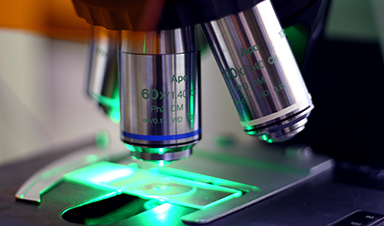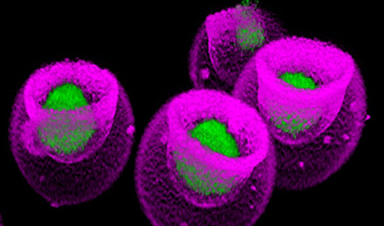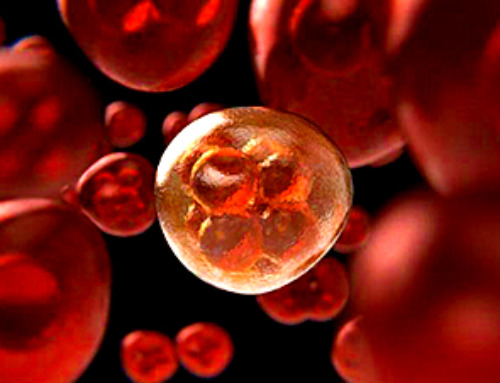Like our eyes, microscopes are limited in what they can see because of their resolution, or their ability to see detail. The detail, or information, from the object is there, but some of it gets lost as the light reflecting off of the object moves through the air.
“The whole premise of this is built on one single fact—the way light interacts with any matter is linear,” said Kamilov, assistant professor of electrical & systems engineering and computer science & engineering. “But the reality is that the interaction is actually not linear.”
For example, if you shine a flashlight through your hand, you can’t see the source of the light because it’s bending, and that is nonlinearity. With a single cell, the bending is so light that it is nearly transparent, which is linear.
When light interacts with a cell or an object, the light going out of the cell loses the information it gathers from that interaction. But because of that interaction, there are fluctuations in the vicinity of that cell that work with such matter and get retransformed and remitted. Those fluctuations are encoded into the nonlinearity of the interaction, but today’s microscopes are unable see this, Kamilov said.
“We want to take into account this nonlinear interaction of light, objects and premises, and if we do it correctly, we can extract that information, which normally disappears in a current microscope and is treated as ‘noise,'” Kamilov said. “We want to decode the information from the noise and add it back into the resolution, and that should give us features that are smaller than the resolution limit.”
Kamilov said there are two types of noise: imperfections and mathematical noise that is the result of science’s current limitations. It is the mathematical noise that he wants to capture.
Image Credit: Washington University in St. Louis
News This Week
Scientists study lipids cell by cell, making new cancer research possible
Imagine being able to look inside a single cancer cell and see how it communicates with its neighbors. Scientists are celebrating a new technique that lets them study the fatty contents of cancer cells, [...]
Antibiotic Breakthrough: Revolutionary Chinese Study Paves Way for Superbug Defeating Drugs
New research reveals that fluorous lipopetides act as highly effective antibiotics. Bacterial infections resistant to multiple drugs, which no existing antibiotics can treat, represent a significant worldwide challenge. A research group from China has [...]
Signs of Multiple Sclerosis Show Up in Blood Years Before Symptoms Appear
UCSF scientists clear a potential path toward earlier treatment for a disease that affects nearly 1,000,000 people in the United States. By Levi Gadye In a discovery that could hasten treatment for patients with multiple [...]
Advanced RNA Sequencing Reveals the Drivers of New COVID Variants
A study reveals that a new sequencing technique, tARC-seq, can accurately track mutations in SARS-CoV-2, providing insights into the rapid evolution and variant development of the virus. The SARS-CoV-2 virus that causes COVID has the unsettling [...]
No More Endless Boosters? Scientists Develop One-for-All Virus Vaccine
End of the line for endless boosters? Researchers at UC Riverside have developed a new vaccine approach using RNA that is effective against any strain of a virus and can be used safely even by babies or the immunocompromised. Every [...]
How Are Hydrogels Shaping the Future of Biomedicine?
Hydrogels have gained widespread recognition and utilization in biomedical engineering, with their applications dating back to the 1960s when they were first used in contact lens production. Hydrogels are distinguished from other biomaterials in [...]
Nanovials method for immune cell screening uncovers receptors that target prostate cancer
A recent UCLA study demonstrates a new process for screening T cells, part of the body's natural defenses, for characteristics vital to the success of cell-based treatments. The method filters T cells based on [...]
New Research Reveals That Your Sense of Smell May Be Smarter Than You Think
A new study published in the Journal of Neuroscience indicates that the sense of smell is significantly influenced by cues from other senses, whereas the senses of sight and hearing are much less affected. A popular [...]















Leave A Comment